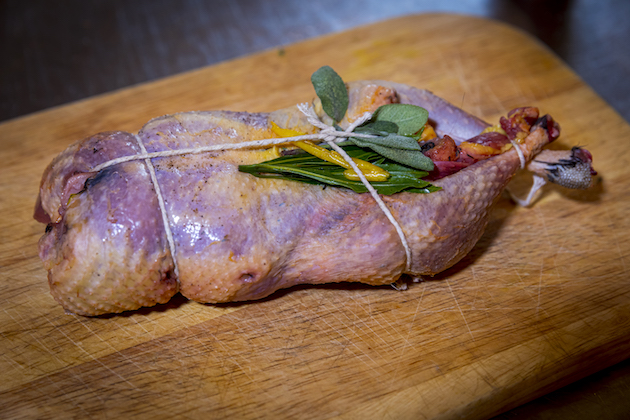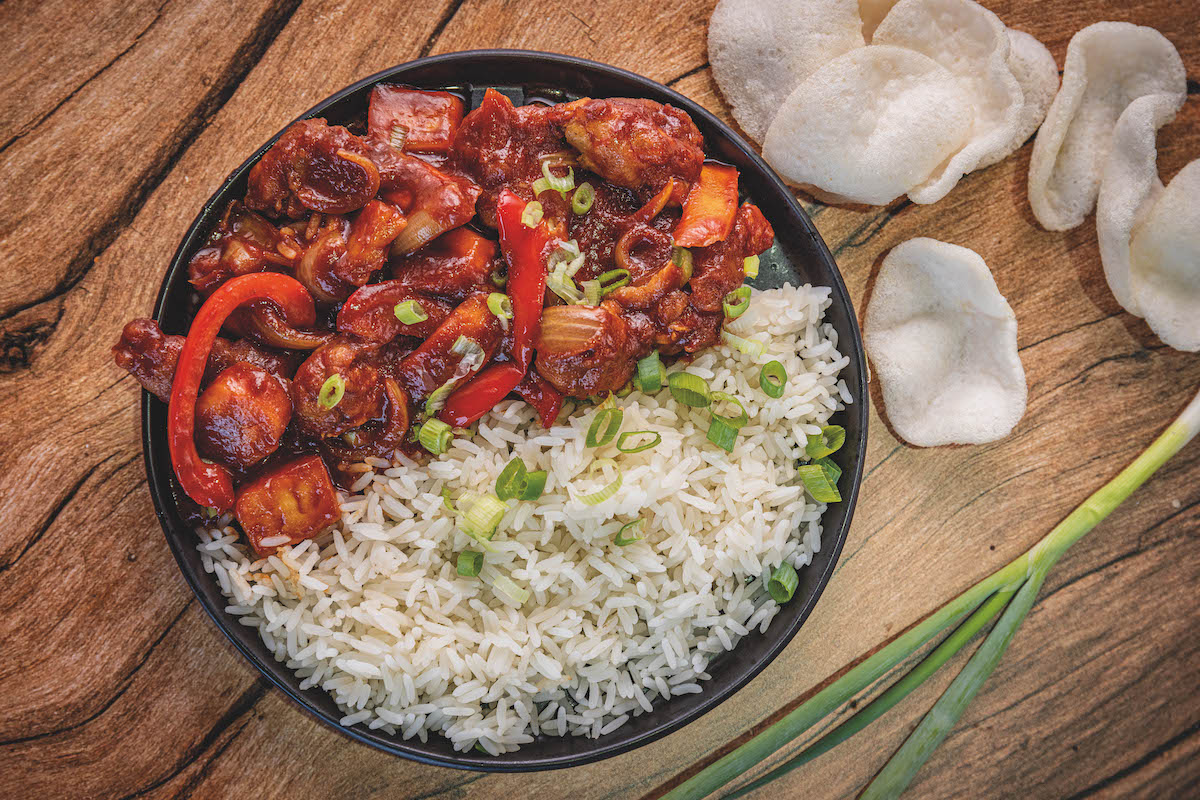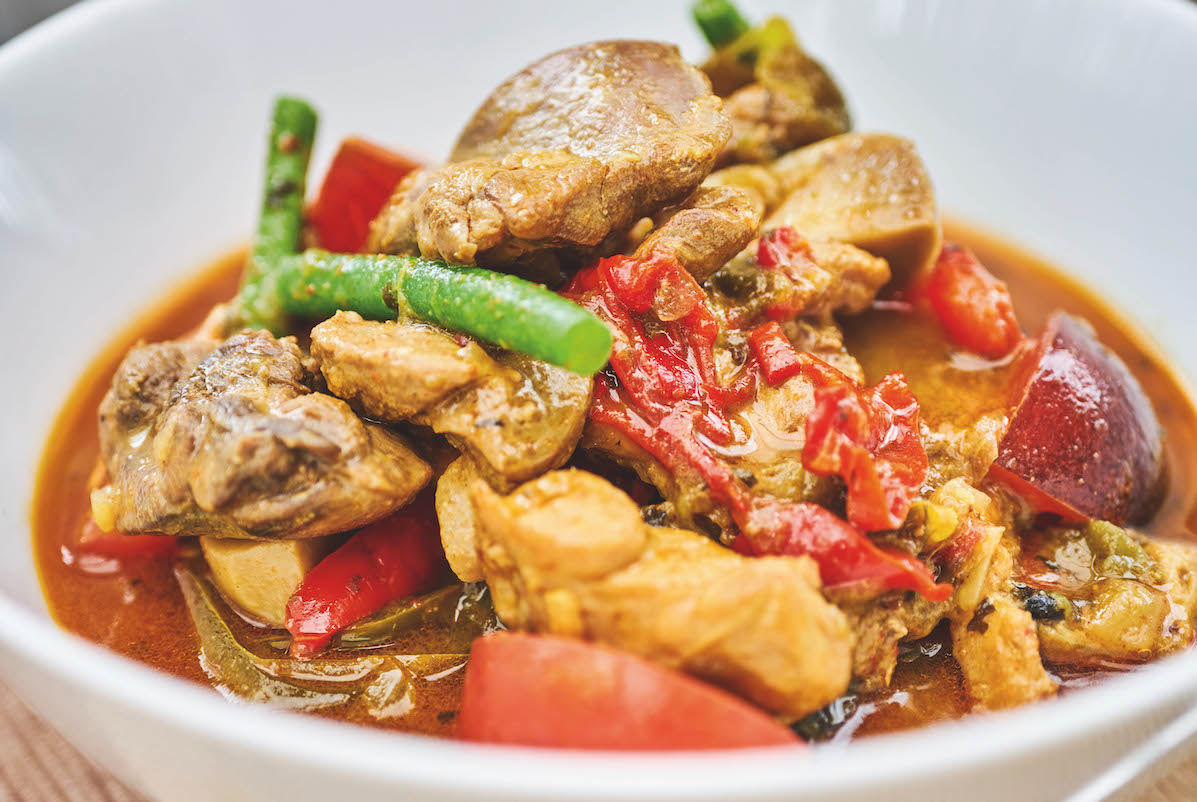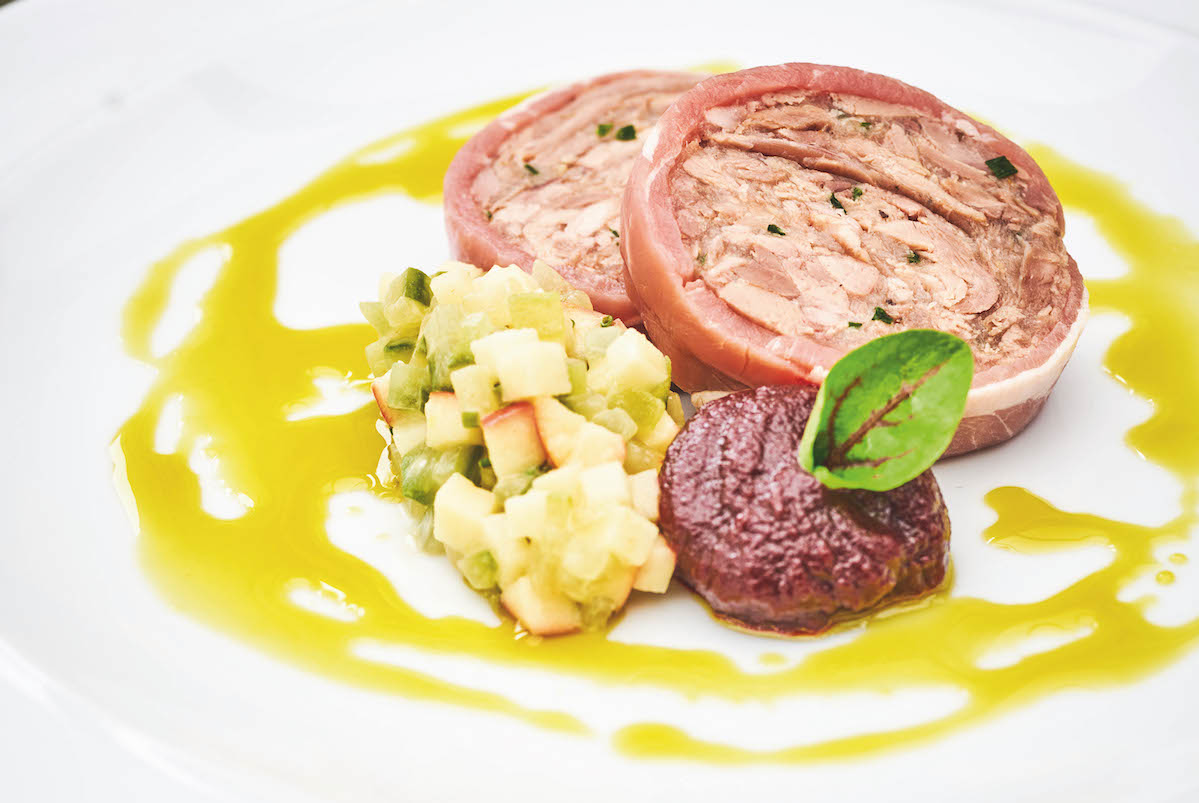How to bone a pheasant (and why you should)
Rose Prince shows you how to bone a pheasant and makes a juicy and succulent roasted pheasant dish. Serves two.

A prepared boned pheasant
I have avoided boning chickens or similar for years, thinking it was a fiddle.
I was unable to decide if it was a distinct improvement, save for the fact that it makes carving easier. However, that was before spending a lot more time with my expert butcher son this year. Having whipped the main carcass out of the chicken — Jack is that quick — he tied it with string and cooked it in a pan with a heavy weight on top. This produces a crisp outer surface and sumptuously juicy inner meat. Could this, I wondered, be adapted to pheasant. It can and, in fact, the method greatly helps to hold in the moisture. I’m now a fan of boned pheasant. Equipment for the ‘flat iron’ weight is easy to cobble together — a house brick, wrapped in a thick layer of aluminium foil, and some fine, strong string.
Boned pheasant with grapes and braised green lentils
Ingredients
- 1 pheasant
- sea salt and freshly ground black pepper
- 2 strips lemon zest
- 6 fresh sage leaves
- 1 bay leaf
- 125g unsalted butter
- 240g red grapes, in two bunches
- 2tbsp extra virgin olive oil
- For the lentils: 1 banana shallot, finely chopped
- 2 cloves garlic, finely chopped
- 1 medium carrot, finely chopped
- 2tbsp extra virgin olive oil
- 150g Puy or small green lentils

Boned pheasant roasted with grapes and lentils
Method
- Preheat the oven to 180°C. Turn the pheasant so the back of the bird is before you. Snip off the wings at the joint nearest the main skeleton. Use a very sharp filleting knife to cut an opening from neck to parson’s nose.
- Run the knife between the meat and the bones to the left and right of the backbone, moving towards the first leg joints. Once the meat has been filleted from around the joint, snip the joint’s axis with a pair of game scissors. The lower leg bones stay in.
- Turn the pheasant on its side and begin to bone out the breast section. Be careful not to puncture the skin of the pheasant when reaching the protruding breastbone. Continue with the other side of the bird, finally removing the whole breast and backbone section, to be left with a floppy looking slab of meat, with two bone-in legs attached.
- Season the inside of the pheasant with salt and pepper. Put a strip of lemon zest inside, plus three sage leaves. Shape into a neat cushion then tie it with string in three places, tucking in the bay leaf, sage leaves and the second strip of lemon zest. Season the outside.
- To make the lentils, cook the shallot, garlic and carrot in the olive oil until soft. Add the lentils, then cover with water to the depth of 3cm. Simmer for about 25 to 35 minutes — until they are tender, but not too soft. Add more water if necessary. Season with salt at the end of cooking. Remove from the heat immediately.
- In a pan over a medium heat, brown the pheasant in the butter, turning it frequently, until golden. Place it in the oven with the brick — wrapped in aluminium foil — on top. Cook for 25 minutes or until the juices run clear when the bird’s leg is pierced with a skewer.
- Meanwhile, brush the grapes with the olive oil and place them in the roasting tin with the meat for the last 10 minutes of the pheasant’s cooking time, until they are wrinkled and beginning to split. Cut the boned pheasant into thick slices and serve with the lentils and grapes.








